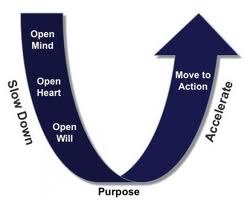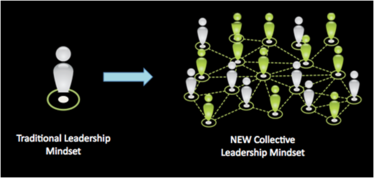Bucky's Living Legacy
“You never change things by fighting the existing reality. To change something, build a new model that makes the existing model obsolete.”
The Buckminster Fuller Challenge from Buckminster Fuller Institute on Vimeo.
1 Comment“You never change things by fighting the existing reality. To change something, build a new model that makes the existing model obsolete.”
The Buckminster Fuller Challenge from Buckminster Fuller Institute on Vimeo.
1 Comment“You never change things by fighting the existing reality. To change something, build a new model that makes the existing model obsolete.”
The Buckminster Fuller Challenge from Buckminster Fuller Institute on Vimeo.
Leave a comment“Stakeholder” is a big word in our practice at IISC. When it comes to our collaborative change work, we take stakeholder analysis very seriously, in certain situations spending a few days to complete this critical task. The aim is generally to surface the names of those groups and individuals who as a sum total will help to ensure that we have the system represented in the room. What this means is pushing people, at times, into uncomfortable places to consider typically unheard voices and those they have outright resisted inviting to the table but without whom they could not hope to make the kind of change to which they aspire.
Typically we engage in a conversation with our clients and partners that asks them identify, in the context of some given change effort, those whose stakes are defined in the following ways: Read More
Leave a comment
Thomas Rice, founding Board Chair of IISC, draws the rubber band connecting vision and mission.
Leave a comment Photo by: Carija
Photo by: Carija
The following is a post by Steve Waddell in NetDev….
Last week I presented maps for a Renew Boston (RB) group. Although the maps are preliminary, they provide a good illustration of how the two methodologies used can be complementary. They present a nice case study about use of maps.
Why map? Here’re the reasons I give:
I’m keen on developmental theory. And I’m particularly interested in the implications of the Wilber-Combs Lattice. I don’t want to distract you with the esoteric, but I do think the picture is worth including.

The most important contribution of the Wilber-Combs Lattice is the distinction between states and stages. Stages (vertical axis) are developmental – they are sequential, you can’t skip through them and they progressively transcend and include each other. States (horizontal axis) on the other hand, are available to all stages.
What does this all mean? Read More
Leave a comment
Click here to see The 1st Proposition
Click here to see The 2nd Proposition
“Let’s all keep an open mind” How many times have you heard that one? How often has it worked? Keeping an open mind is not as easy as following a ground rule once it has been stated, specially not in a culture where we are rewarded for being right – for knowing. Read More
Leave a comment
“Everyone today has to be an artisan and bring something extra to their jobs.” This says Thomas Friedman in the New York Times. I’m not sure I like where he is coming from, it sounds a little bit like adding obscure features to a DVD player. But I do like the point. I like this idea of being artisans, of engaging our work as a craft, adding meaning to our tasks by putting our own signature on what we do.
Somewhere beyond Friedman’s capitalistic “do more,” in places outside the yupified fields of trendy taste, there is significant power to the work of an artisan. For example, the work of social change has become so professionalized that it is often disconnected from the depths of purpose that could unleash transformation. But by thinking of ourselves as artisans our own self-expression can actually serve connection, it can bring us closer to that place where hearts can meet.
Consider the purpose of your work, then think of what you do every day… how much more of yourself could you bring to this field where we toil? What’s your craft? What is it that you can create?
Leave a commentThis post first appeared back in March of this year, and I am re-posting as I prepare to co-present a session tomorrow at the Bioneers by the Bay gathering in New Bedford, MA. In our session, “Transformative Leadership for Sustainability” we will experience each of the dimensions below . .
As process designers, facilitators, and change agents, we are called upon to help create conditions in which amazing things can happen between people, whether alignment, agreement building, innovation, etc. At times this can be a tall order. Thankfully we are supported by an array of tools and techniques at our disposal. Knowing which of the social architect’s tools to turn to in any given situation is a core challenge. Something I’ve recently found useful as a guide is consideration of the different dimensions of social space and how these can be leveraged so that collective work can bring about the very best.
17 Comments
This is a very exciting time for those of us who are working to apply the logic of networks to the work of social change. Our ideas are gaining traction as more and more experiments start to point towards success. Life online, the viral nature of meaningful stories and our human desire for deeper connection all serve to confirm our intuitive understanding of life in a network. However, as we step into this paradigm shift, as we start to approve of these ideas, we still have to contend with the constraints of the organizational and funding structures within which we currently work. Read More
Leave a commentFor the better part of the last year and a half, my colleagues Ashley Welch and John McGah and I have been moving forward an IA/IISC cross-sectoral practice to bring Interaction methods + to the support of sustainability endeavors. Our early meetings around this budding practice included conversations about how best to frame leadership development for sustainability. We arrived at the graphic above, which combines what we see as the core elements needed for leadership to embrace and enroll others in sustainable pursuits.
With a foundation (watermark, if you will) of content knowledge about what sustainability is, the three elements are as follows:
• Systems Thinking (Seeing) – This is all about helping individual leaders and collective leadership see the whole, to understand that nothing stands in isolation, and that we must have a deeply felt sense of the interconnectedness of phenomena in order to make truly informed decisions. We take both our inspiration and instruction in this realm from the likes of the Sustainability Institute, the Center for Whole Communities, and The Elumenati.
• Self-Awareness (Being) – What we do is informed by who and how we are in the world. Awareness of our own beliefs, mental maps, and inherent tendencies is a powerful lever for making the sustainability shift, for aligning thought behind action. Self-awareness might also be cast as mindfulness, or the ability to be present to what is. Here we build upon our existing work around the inner side of leadership with the contributions of the Pachamama Alliance and John Milton.
• Collaborative Capacity (Doing) – With the whole in mind and awareness of our inner state, leadership will have a greater understanding of the need to work collectively toward more sustainable lifestyles and ways of doing business. Collaborative skill is key, including knowing how to frame sustainability efforts, create the right conditions for innovation, build agreement, structure decision-making, and design life-affirming experiences for diverse stakeholders. This is the heart and soul of the Interaction Method, and it is supplemented by the work of Keith Sawyer, CRED, and the many pioneers of large group methods and network-building.
Another key element and overlay for all of these is leadership’s ability to understand and navigate power dynamics as they play out in systems, in ourselves, and in our chosen methods for working together.
Eager to hear your reactions, tweaks, and additions.
Leave a comment“Collaboration drives creativity because innovation emerges from a series of sparks – not a single flash of insight.”
– Keith Sawyer, Group Genius
Having last week blogged about when we might want to de-emphasize innovation and think about the small steps we can take towards change, today I embrace the “i word.” In doing so, I tip my hat to Keith Sawyer and to my Interaction colleague Andy Atkins for helping to clarify my thinking around the connection between collaboration and innovation for social change. Both are obviously quite popular concepts at the moment, and there is some discussion about how well they go together. For example, one of my colleagues had a conversation with a corporate leader last week during which this leader shared his deep belief that collaboration inhibits creativity and that flashes of insight occur in the individual’s mind. While the last part of that statement may be true, what leads to that flash and where one goes with it would seem to have everything  to do with interaction with others.
to do with interaction with others.